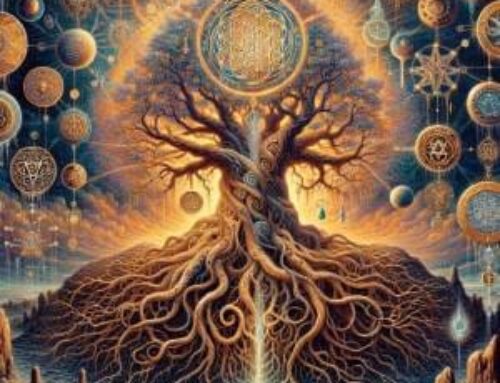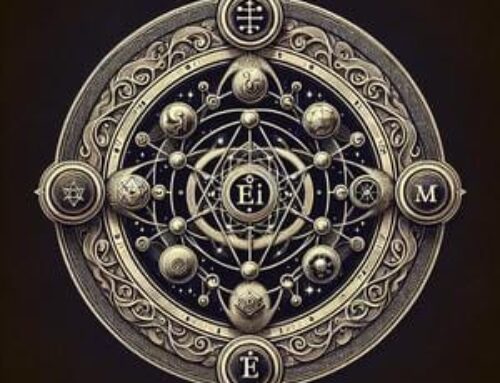Contents
Introduction to “Alchemy of Souls”
In a realm far removed from the mundane pursuit of transmuting lead into gold, lies the true essence of “Alchemy of Souls”— a spiritual odyssey destined to metamorphose the very fabric of the soul. The “Alchemy of Souls” ventures into the ethereal domain, emphasizing the purification and illumination of the human spirit. This profound journey is not just an inward dive but an alignment with the hidden mechanisms of the cosmos, eventually achieving a sacred union with the divine. Through this metamorphic voyage, one can ascend to heightened states of consciousness, uncovering the quintessence of their existence.

Transcending the Mundane: The Philosophical Underpinnings
Delving into the essence of alchemy, we find an intimate liaison between the alchemist and the substance they manipulate. It is a harmonious dance of spirit and matter, requiring a deep comprehension of the cosmos’ cryptic laws. The philosopher’s stone, a potent emblem in alchemical lore, encapsulates the pinnacle of spiritual enlightenment and transformation.
A Symphony of Spirit and Matter
At the heart of alchemical philosophy lies the principle of universal interconnectedness. This intricate web enables the alchemist to pierce the veil of nature’s arcane mysteries, harnessing its energy for spiritual elevation. By acknowledging and venerating these clandestine forces, alchemists unlock a reservoir of potential, reaching for the seemingly impossible.
An Odyssey of Self-Purification
Alchemical rituals are steeped in the purification of the self, a pursuit to unveil the inner radiance. Through meticulous refinement of the soul, one embarks on a path toward perfection, unveiling the universe’s most profound secrets. This voyage traverses multiple stages, each a symbolic reflection of the alchemical process.
Aspiring to Divine Enlightenment
Ultimately, alchemy aspires towards the acquisition of the philosopher’s stone—a metaphor for spiritual awakening (1). This transformation transcends the physical realm, fostering a deeper comprehension of the cosmos and one’s intrinsic role. The philosopher’s stone embodies the zenith of divine wisdom and the transformation of the inner self.
The Sanctum of Transformation: The Alchemical Lab
“Alchemy of Souls”, in its broadest sense, is a complex and indefinite blend of chemistry, astrology, philosophy, magic, mysticism, theosophy, and other ingredients, aiming to understand life and the formation of inanimate substances (2).
The alchemical laboratory transcends mere physicality; it is a sacred space where metamorphosis unfolds. Here, the alchemist engages with nature’s forces, unearthing profound secrets. The laboratory, therefore, symbolizes the inner sanctum of the alchemist, where the true alchemy—spiritual transmutation—occurs.
Athanor: The Alchemist’s Hearth
The Athanor, a crucial alchemical furnace, is indispensable for the slow, steady transformation of materials, maintaining a consistent heat. This furnace epitomizes the inner crucible within the alchemist, where both the spiritual and physical elements are refined and transformed.
The Instruments of Transmutation
Traditional alchemists wielded a plethora of tools; however, contemporary spiritual alchemy places the mind and spirit at the forefront. Physical instruments serve as metaphors for the inner work required for true transformation.
Stages of the Great Work
The alchemical process unfolds through distinct phases: calcination, dissolution, separation, conjunction, fermentation, distillation, and coagulation. Each phase mirrors a step in the purification and transmutation of the soul, steering one towards spiritual enlightenment.
Interweaving Threads of Alchemical Wisdom
Reflect upon the alchemical journey as a patchwork quilt of esoteric wisdom, personal insight, and transformative practices. Each stitch in this quilt—every philosophical musing and ritual practice—contributes to a tapestry of profound spiritual metamorphosis.
As one delves deeper into the labyrinth of alchemical philosophy, the boundaries between the material and the spiritual blur, revealing the universe as an interconnected web of mystery and potential. In this mystical journey, the alchemist becomes both the artist and the canvas, eternally transforming and being transformed.
The Great Work and the Philosopher’s Stone
The Great Work – or Magnum Opus – isn’t just about concocting mystical substances; it’s the alchemist’s journey toward ultimate enlightenment, a metaphorical and literal transformation. This isn’t a mere chemical experiment; it symbolizes the alchemist’s path to spiritual awakening.
Stages of the Great Work
Alright, so the Great Work is broken down into phases, each one more profound than the last. These stages – often represented by colors – signify the alchemist’s evolving spiritual state: black (nigredo), white (albedo), and red (rubedo). Each step, a rung on the ladder to enlightenment.
The Black Stage (Nigredo)
Nigredo. This phase is dark, murky. Here, the alchemist grapples with their inner turmoil, facing the shadow self. It’s a necessary descent into chaos, a metaphorical death and rebirth. The ego crumbles, paving the way for transformation.
The White Stage (Albedo)
Then comes Albedo, the whitening. It’s about purification, clarity – a cleansing of the soul. The lessons of nigredo are integrated, the alchemist finds inner light, moving closer to spiritual purity. Enlightenment is within reach.
The Red Stage (Rubedo)
Finally, Rubedo – the reddening. This is the grand finale, the culmination of the Great Work. The philosopher’s stone is attained, spiritual enlightenment is realized. Here, the alchemist unites the divine with the material, transforming not just themselves but the world around them.
Conclusion of “Alchemy of Souls”
“Alchemy of Souls”, at its core, is a profound spiritual odyssey. It transcends the physical transformation of materials, seeking instead to purify and enlighten the human spirit.
It is a complex, multifaceted art that combines chemical manipulation and mystical symbolism, offering valuable insights for cultural historians and art historians (3).
Through the stages of the Great Work, one aspires to achieve the philosopher’s stone, symbolizing the zenith of spiritual enlightenment. This journey isn’t for the faint of heart; it demands patience, perseverance, and unwavering belief in the world’s spiritual essence. True alchemical transformation is both an internal and external process, leading to the realization of one’s highest potential and a harmonious connection with the divine.
Further Explorations into Alchemy
For those intrigued by this mystical path, the Hermetic Academy offers a trove of resources on both the spiritual and practical aspects of alchemy. Here, one can delve deeper into the ancient art, guided by seasoned practitioners.
FAQs- Alchemy of Souls
1. What is the primary goal of alchemy?
A: Spiritual enlightenment – the transformation of the soul. The philosopher’s stone is more than a myth; it’s the emblem of divine wisdom and inner purity.
2. How does the alchemical process begin?
A: It kicks off with nigredo – the black stage. This is where the alchemist confronts their inner darkness, dismantling the ego and facing the shadow self. It’s the first step in the purification process.
3. What role does the alchemical laboratory play in spiritual transformation?
A: The laboratory is a metaphor for the alchemist’s inner space. It’s where true transformation occurs, a symbolic arena for experimenting with nature’s forces and uncovering the world’s deepest secrets.
4. What is the significance of the Athanor in alchemy?
A: The Athanor, a special furnace, provides constant, even heat essential for the transformation of materials. It symbolizes the alchemist’s inner furnace, where both spiritual and physical aspects are refined and transformed.
5. Where can I learn more about the practices of alchemy?
A: For those keen on diving deeper into alchemy, the Hermetic Academy is a treasure trove of resources and guidance on this ancient art’s spiritual and practical facets.
References
(1) Rubenstein, E. (2023). Alchemy: Secrets of Consciousness Transformation. Hermetic World, Paphos.
(2) Winter, G. (1932). Alchemy and Alchemists. Nature, 130, 900-900. https://doi.org/10.1038/130900a0.
(3) Pagel, W. (1981). Alchemy. A bibliography of English-language writings. Medical History, 25, 206 – 207. https://doi.org/10.1017/S0025727300034402.





